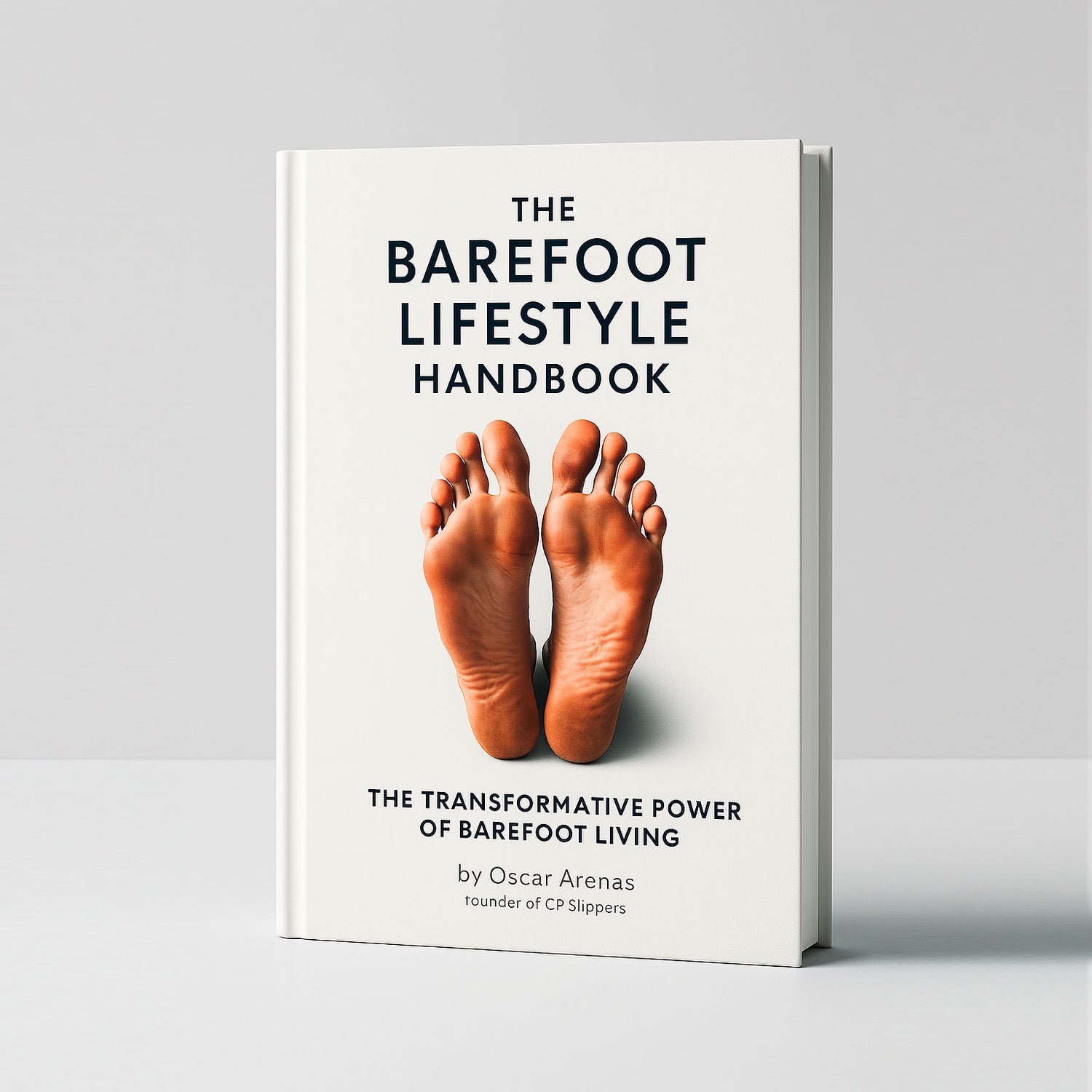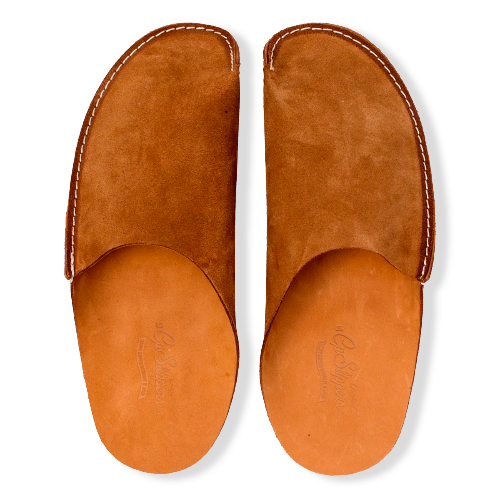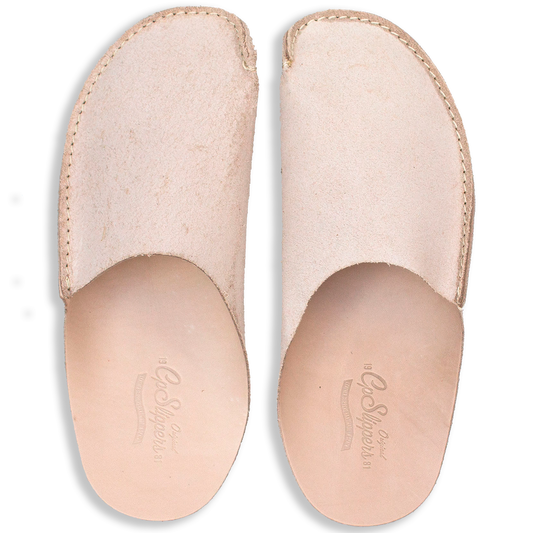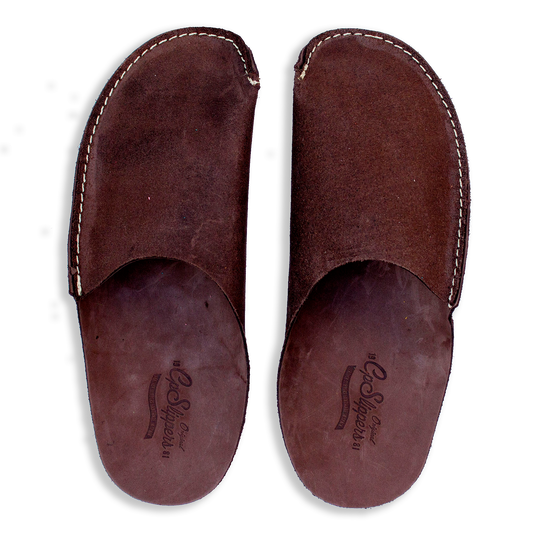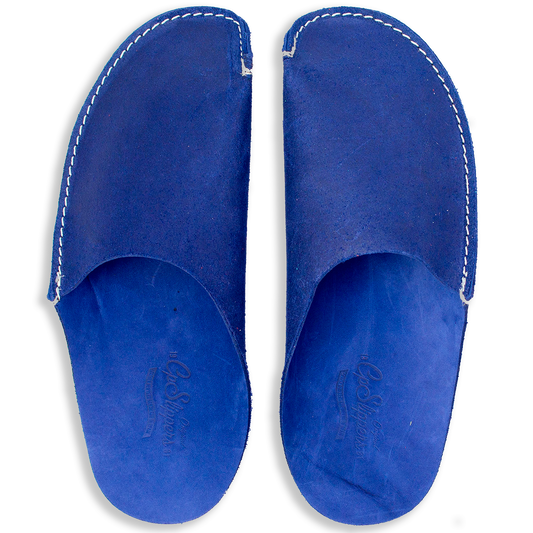Leather has been intertwined with human progress since our earliest ancestors draped animal skins over their shoulders to survive harsh climates. From the first primitive footwear to the elegant leather slippers handcrafted by CP Slippers, this versatile material tells a story of innovation, artistry and adaptation. The following guide explores how leather was used in prehistoric times, how tanning techniques evolved, the different types of leather available today and why responsible craftsmanship matters.
Early human ingenuity
Long before the dawn of civilisation, people wrapped animal skins around their feet and bodies to protect themselves from stones and the elements. When they discovered that food and water could be carried in bags made from skin, they were able to travel further and explore new lands. By curing these skins in the sun and rubbing them with oil and bark, early humans produced flexible leather that resisted rot, laying the foundation for one of the world’s oldest crafts.
Across ancient civilisations, leather quickly became indispensable. Archaeological evidence shows that peoples in what is now Pakistan were tanning hides between 7000 and 3300 BCE. The material was used for waterskins, bags, harnesses, boat hulls, armour, quivers, scabbards, boots and sandals. Tanners were respected artisans in Greek and Roman societies, although the process itself was considered so foul‑smelling that tanneries were relegated to the outskirts of towns.
The birth of tanning: fat, plant and mineral methods
Tanning is the process of transforming raw hides into durable, long‑lasting leather by altering the protein structure of the skin. Early tanners discovered three main techniques that are still recognisable today:
- Fat tanning: In the Early Stone Age (around 8 000 BCE), people rubbed fatty substances into rawhides to waterproof them. This simple method worked particularly well for seal skins in colder regions, where artisans softened hides with urine, tumbled them and masticated them with their teeth before treating them with fish oil.
- Plant‑based tanning: Approximately 5 000 years after fat tanning emerged, the Egyptians and Mesopotamians began using tannins extracted from the bark of Acacia nilotica (gum arabic) to preserve hides. Vegetable tannins penetrate slowly and produce a stiff yet durable leather that was prized for sandals and armour. This method remains widely used in traditional tanneries today.
- Mineral‑based tanning: Classical societies such as the Romans experimented with alum (a mineral composed of aluminium salts). They tanned tough corium leather for sandals and supple aluta leather using alum in a process similar to modern alum tanning.
These early tanning techniques illustrate how craftspeople manipulated natural resources to meet practical needs. Even today, artisans in Morocco’s royal cities of Marrakesh and Fez use vegetable tannins derived from plants like pomegranate, henna, indigo and saffron to dye hides in vibrant reds, blues and yellows
Inside the ancient tannery
The work of turning raw skins into leather was labour‑intensive and unpleasant. Skins arrived at tanneries dried stiff and covered with soil and gore. They were soaked in water to remove dirt, then pounded and scoured to eliminate flesh and fat. Hair removal involved soaking the hides in urine, painting them with a lime solution or letting them putrefy before scraping. To soften the material, tanners “bated” the hides by pounding dung into the skin or soaking it in a solution of animal brains—enzymes in the dung broke down proteins and made the leather pliable.
Although these methods seem crude today, they produced durable leather goods that allowed ancient societies to build boats, craft armour and develop footwear technology. This endurance is one reason why leather has remained an integral part of human culture.
Evolution of tanning in the industrial age
As commerce expanded, so too did the demand for leather. During the Industrial Revolution, tanneries turned to chemicals to speed up production. Chrome tanning, invented in the mid‑19th century, quickly became the dominant method. It now accounts for 80–90 % of the leather market and can tan hides in just one to three days. Chrome tanning produces a soft, uniformly coloured leather that resists water, but it relies on chromium salts and other chemicals. These compounds are harsh on workers and the environment, contributing to water pollution and health problems.
Other chemical methods followed. Aldehyde tanning (often called “wet white”) uses glutaraldehyde or oxazolidine to produce a supple off‑white leather used for chamois cloths. Synthetic tanning, developed during World War II, employs aromatic polymers such as Novolac and Melamine to tan hides when vegetable tannins are scarce. While faster and cheaper, these chemical processes often lack the longevity and patina of vegetable‑tanned leather.
Vegetable tanning: tradition and sustainability
Vegetable tanning remains an artisanal practice prized for its quality and environmental benefits. It uses natural tannins derived from bark and leaves to create leather that can last for generations. Although vegetable tanning consumes more water than chrome tanning and can take up to 60 days, it produces a strong, durable material with a rich patina and avoids harmful chemical by‑products. This method has some drawbacks—vegetable‑tanned leather can be more expensive, more sensitive to heat and less water‑resistant—yet its eco‑friendly nature and longevity make it appealing to conscientious consumers.
The table below summarises the advantages and disadvantages of common tanning methods.
| Tanning method | Key characteristics | Pros | Cons |
|---|---|---|---|
| Vegetable tanning | Uses natural tannins from bark; process can take 30–60 days | Produces durable leather with rich patina; eco‑friendly | More expensive; sensitive to heat and water; limited colour range |
| Chrome tanning | Uses chromium salts; completed in 1–3 days | Soft, uniform leather; water‑resistant | Relies on carcinogenic chemicals that pollute water and harm workers |
| Aldehyde tanning | Employs glutaraldehyde/oxazolidine; produces “wet white” leather | Soft, washable leather (e.g. chamois) | Less durable than vegetable tanning; chemical process |
| Synthetic tanning | Uses aromatic polymers (Novolac, Melamine) | Provides an alternative when vegetable tannins are scarce | Chemical‑intensive; may lack the character of natural tannins |
Types of leather: full‑grain, split, nubuck and suede.
Not all leather is equal. The part of the hide used and the way it is finished determine the material’s feel, durability and appearance:
- Full‑grain leather: Made from the strongest part of the hide, full‑grain leather has a tight, natural grain pattern and offers exceptional durability. It resists moisture and develops a beautiful patina over time. Because the surface is not sanded, natural markings remain visible, giving each product unique character.
- Split leather: After the top layer is removed, the remaining hide is called split leather. This versatile material is often used for linings and upholstery. It has a more uniform appearance than full‑grain leather but is less durable and less moisture‑resistant.
- Nubuck: A type of top‑grain leather buffed on the grain side to produce a velvety texture. Nubuck is wear‑resistant yet susceptible to scratches and liquid damage.
- Suede: Characterised by its fuzzy surface, suede is usually made from split leather. It is popular for shoes and bags because of its soft feel and decorative look, but it requires careful maintenance and regular brushing to retain its texture.
When selecting slippers or other leather goods, understanding these distinctions helps you choose the right material for comfort, durability and aesthetics.
Environmental and health considerations
The tanning industry’s reliance on chemicals has serious environmental repercussions. Agents such as chromium, vegetable tannins and aldehydes can increase the chemical oxygen demand and total dissolved solids of wastewater. If not treated properly, tanning effluents contaminate rivers and soil. Chromium (III) compounds used in tanning can oxidise to carcinogenic chromium (VI) during boiling and sun‑drying, and studies have found harmful levels of hexavalent chromium in chickens raised near tanneries in Bangladesh. Other additives—such as methylisothiazolinone, anthracene, formaldehyde and arsenic—can harm eyes, skin, lungs, liver and kidneys.
To encourage sustainable practices, the UN Leather Working Group (LWG) provides an environmental audit protocol that assesses leather manufacturers on traceability, energy conservation and responsible waste management. Consumers can support environmentally responsible tanneries by choosing vegetable‑tanned products and brands that partner with LWG‑audited suppliers.
CP Slippers: honouring tradition with responsible craftsmanship
At CP Slippers, we draw inspiration from centuries of leather craftsmanship while embracing modern sustainability. Our artisans handpick premium hides—often full‑grain or top‑grain leather—to craft slippers from a single piece of leather. This minimalist approach eliminates unnecessary seams and chemicals, allowing the leather to mould naturally to your foot. Whenever possible we source leather from tanneries that follow environmentally responsible practices and prioritise vegetable tanning.
Whether you prefer the classic elegance of our Luxe collection or the minimalist comfort of our Minimalist line, each pair is designed to age beautifully with wear. For tips on maintaining your slippers, see our guide to leather care and learn why leather is the best material for slippers in our article on leather qualities. If you’re curious about how different leathers compare, explore our deep dive into suede vs. leather slippers.
Conclusion
The story of leather spans thousands of years—from prehistoric peoples covering their feet with rawhides to today’s artisans crafting sophisticated vegetable‑tanned goods. Understanding this history deepens our appreciation of the material’s versatility and resilience. By choosing high‑quality, responsibly tanned leather, you not only enjoy comfort and longevity but also support sustainable practices that protect workers and the environment.
Ready to experience the craftsmanship yourself? Browse the CP Slippers collections to find slippers that embody centuries of leather tradition while providing modern comfort. For more stories on leather craftsmanship and lifestyle tips, visit our journal. Your feet—and the planet—will thank you.


